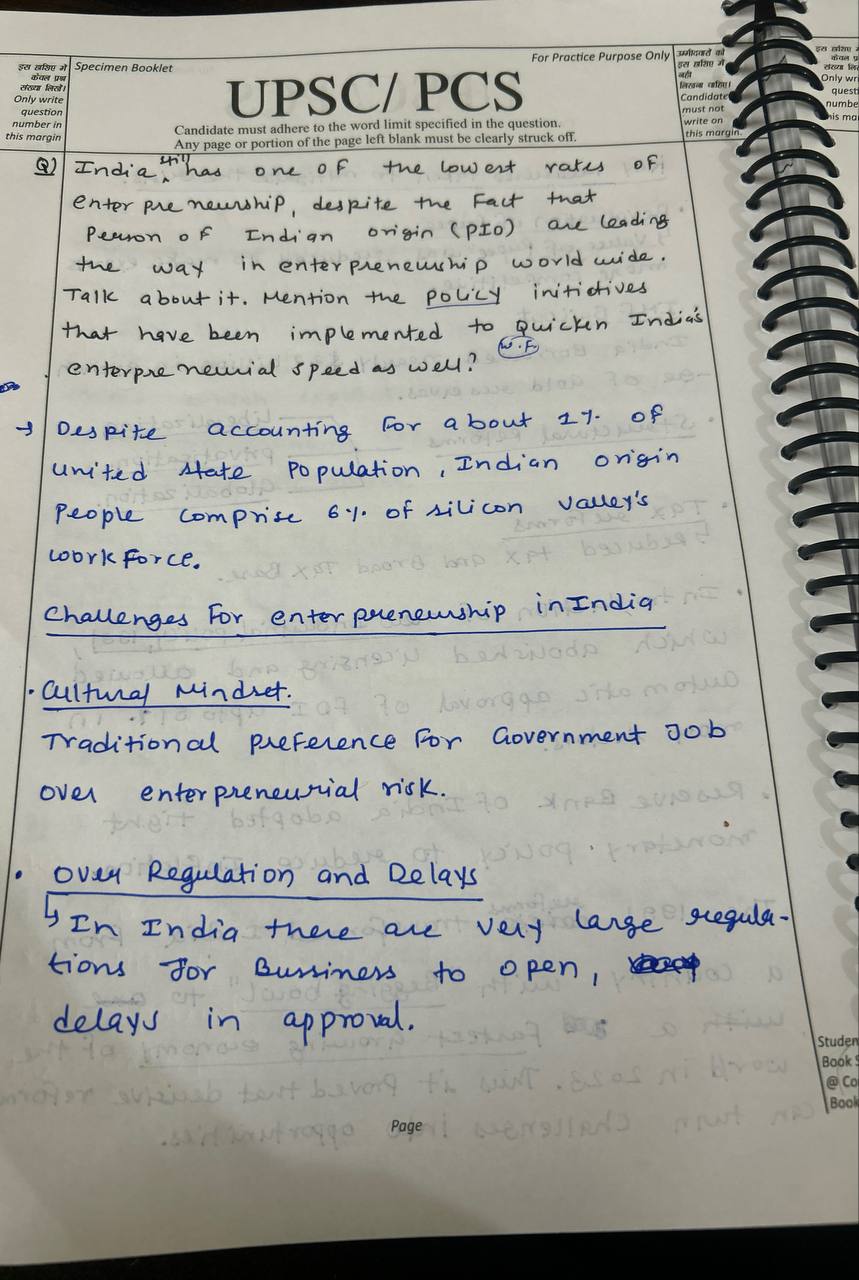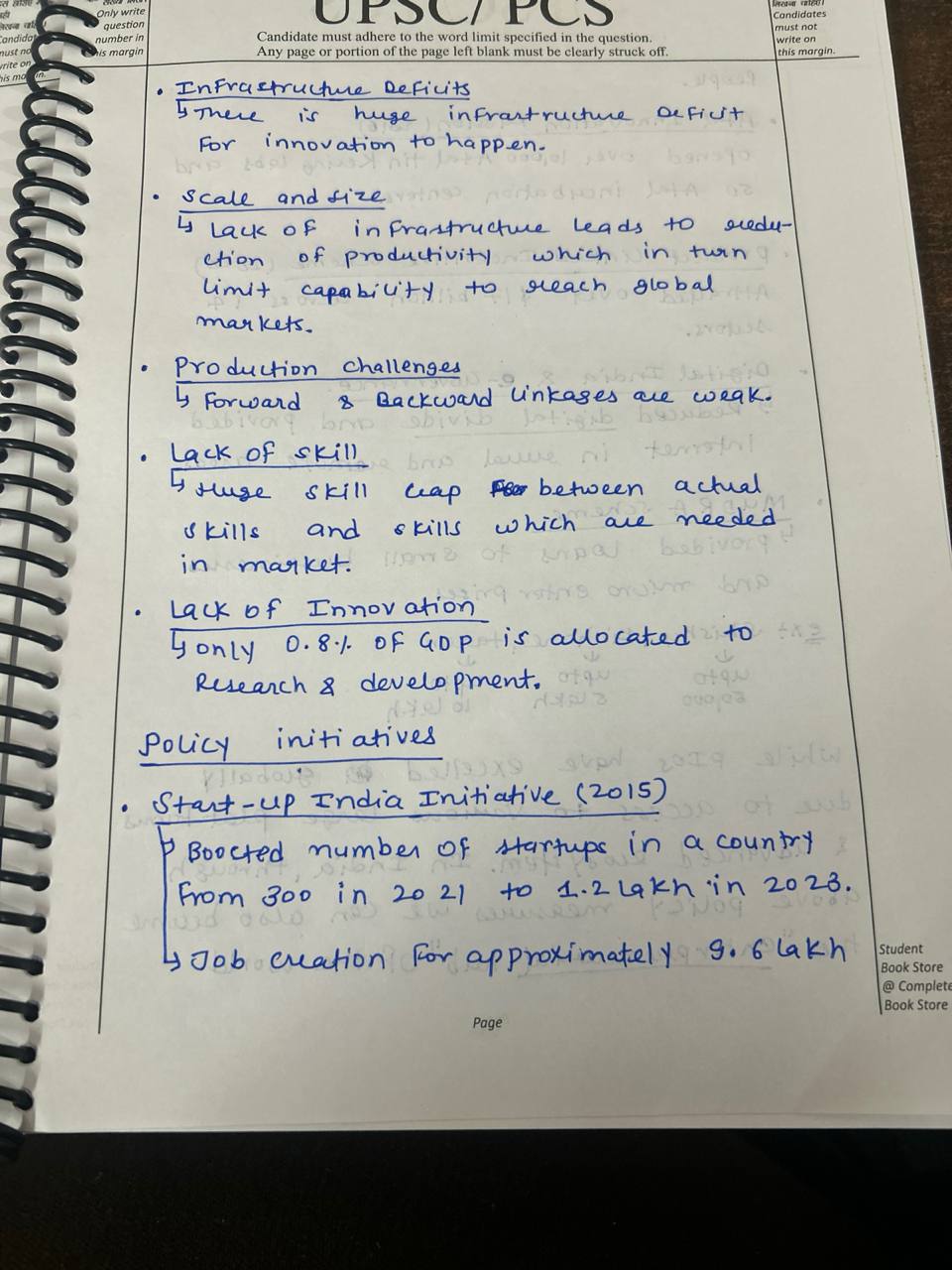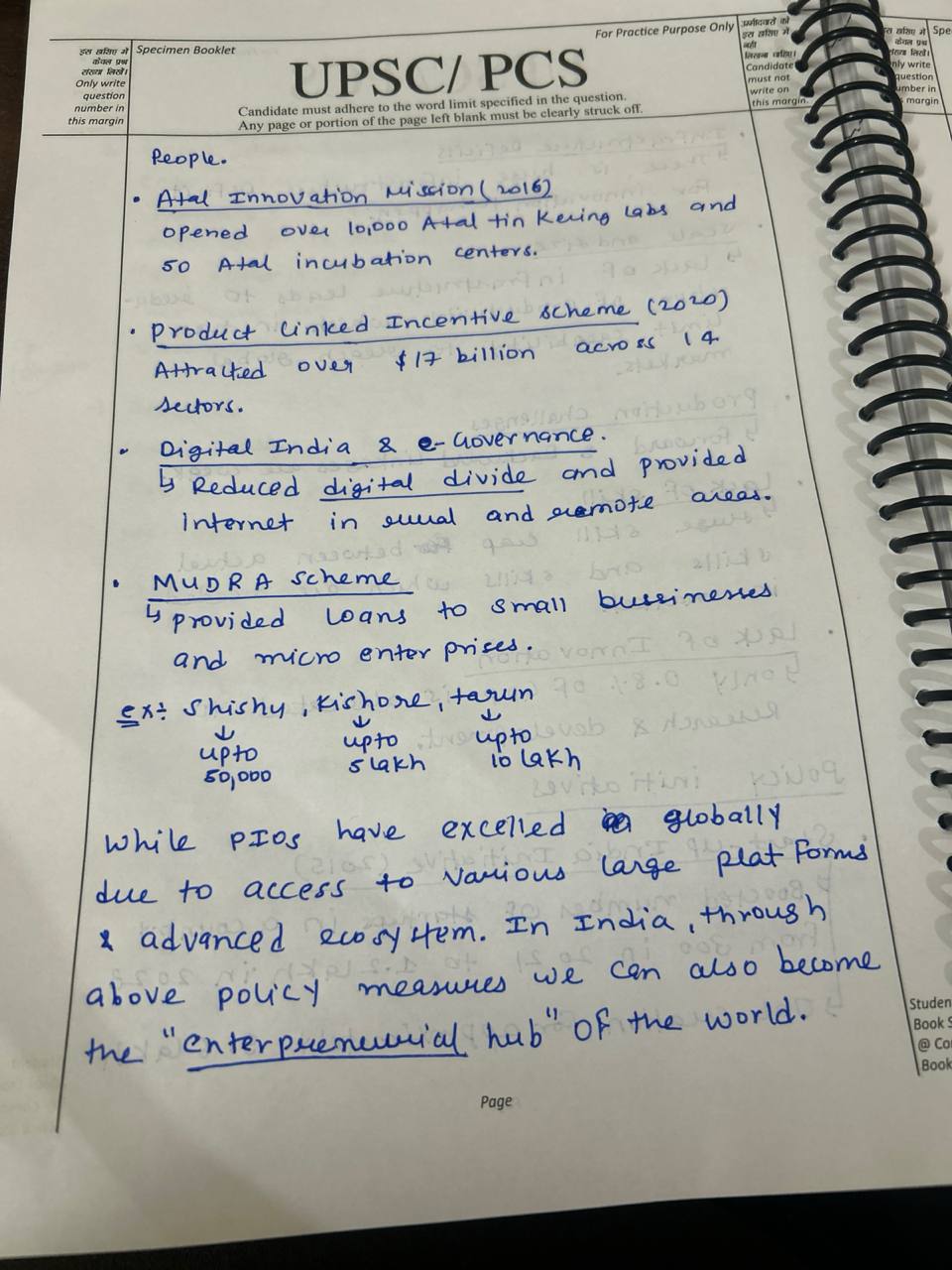India still has one of the lowest rates of entrepreneurship, despite the fact that Persons of Indian Origin (PIO) are leading the way in entrepreneurship worldwide. Talk about it. Mention the policy initiatives that have been implemented to quicken India’s ...
Natural gas is a multipurpose fuel that can be used for power generation, industrial processes, transportation, and domestic use. India's natural gas demand has been growing steadily and is expected to nearly double by 2030. Therefore, through the National Gas Grid, the government is trying to ensurRead more
Natural gas is a multipurpose fuel that can be used for power generation, industrial processes, transportation, and domestic use. India’s natural gas demand has been growing steadily and is expected to nearly double by 2030. Therefore, through the National Gas Grid, the government is trying to ensure its availability in all parts of the country as a reliable and cleaner source of energy. Its adequate availability and equitable distribution can stimulate economic activities, improve productivity, and enhance the overall standard of living in following ways:
- Adherence to the climate goal commitments: Being a cleaner fuel it will help the country in achieving SDG and Paris Agreement commitments to reduce its carbon footprint in a phased manner.
- Meet the rising demand: While the Automobile companies are gradually moving away from diesel vehicles to meet the BS VI norms, the next in line alternatives for automobile fuel are LNG and CNG.
- Positive trade balance: Shifting towards a Gas based economy will reduce our crude oil bills and make the balance of trade favourable for India.
- Improve accessibility: At present, for every million population only about 12.3 km of natural gas pipeline exists in India. National grid can address the accessibility issue as well as existing regional disparities.
- Economical & uninterrupted delivery of fuel: Establishment of a pipeline ensures safe, economical and uninterrupted supply of Natural gas, CNG and PNG to various end users.
Despite the potential benefits, there are several challenges India faces in this regard:
- Capacity utilisation of pipelines: The existing natural gas pipelines are currently operating only at 10% to 20% level of utilisation. Further, pipelines operating for over 10 years have been constrained by limited availability of domestic gas.
- Functioning of Petroleum and Natural Gas Regulatory Board (PNGRB): The regulatory body is marred with several key position vacancies, even the position of Chairperson stands vacant thereby reducing the body’s efficiency.
- Delays in project execution: There are various delays in laying the pipelines due to land acquisition, issue of right of use and multiplicity of agencies.
- Skewed coverage of PNG: The PNG connections are not able to reach every household even when that particular area has been marked as covered as penetration level is not marked as a criterion.
- Infrastructure and financing gaps: Building an extensive gas pipeline network requires significant investment in infrastructure. Attracting long-term investments and financing mechanisms that ensure economic viability and sustainability of the grid is a crucial challenge.
Nevertheless, expansion of the natural gas infrastructure and market will bring along several benefits like socio-economic empowerment, import-substitution, emission reduction, and green energy solutions at affordable prices. Further, natural gas shall address India’s energy security concerns to a greater extent.
See less



See less